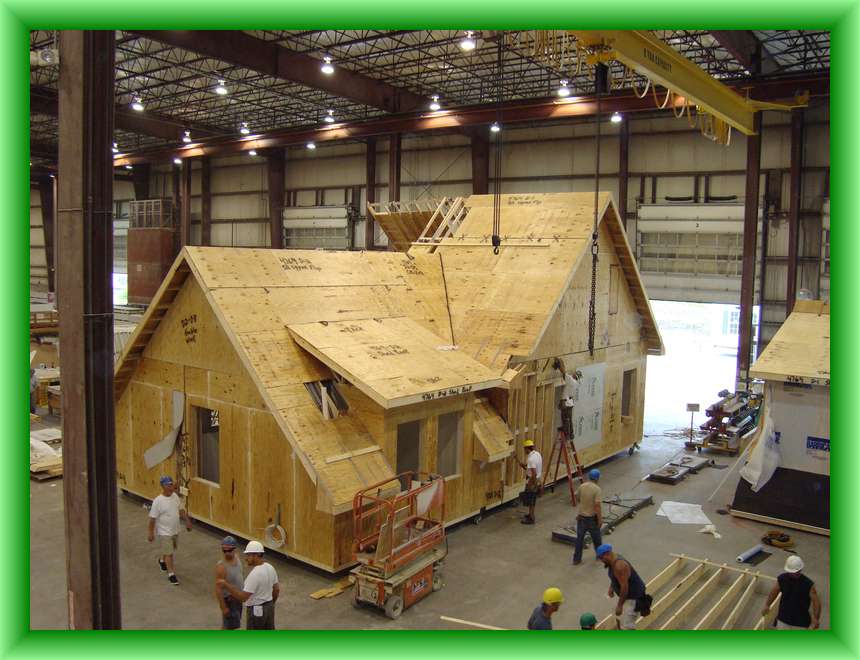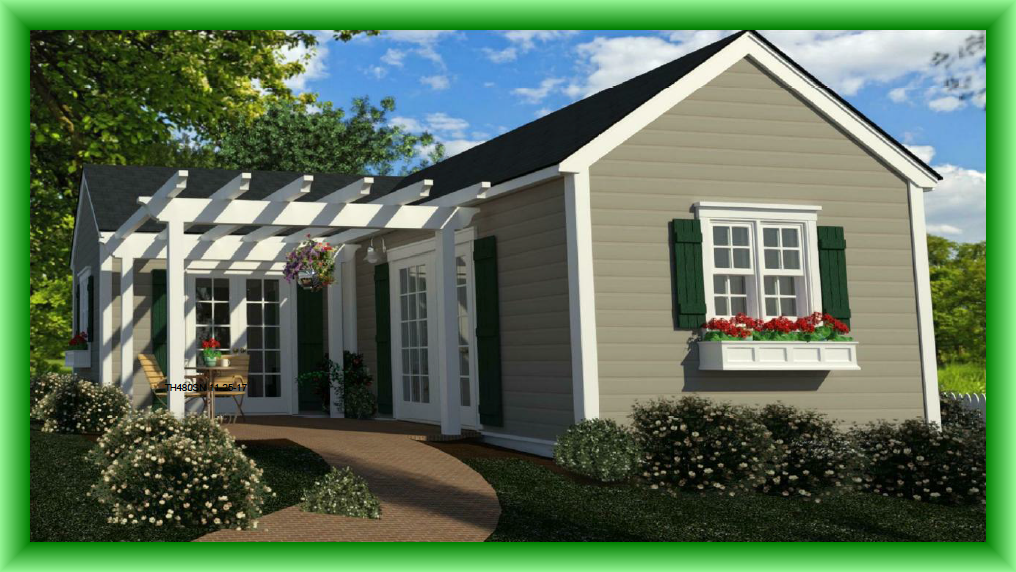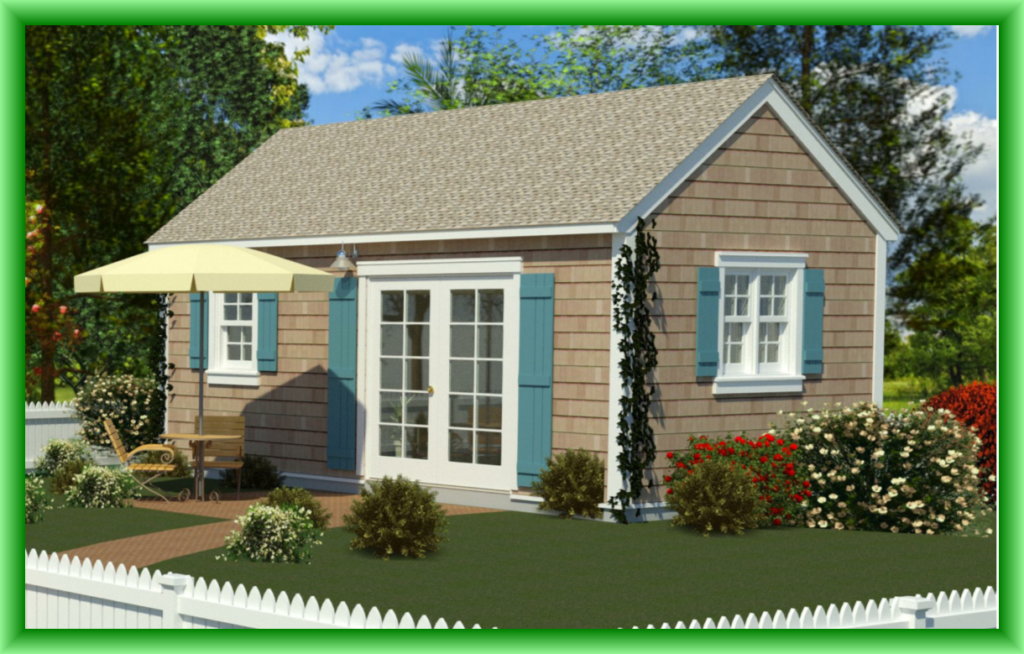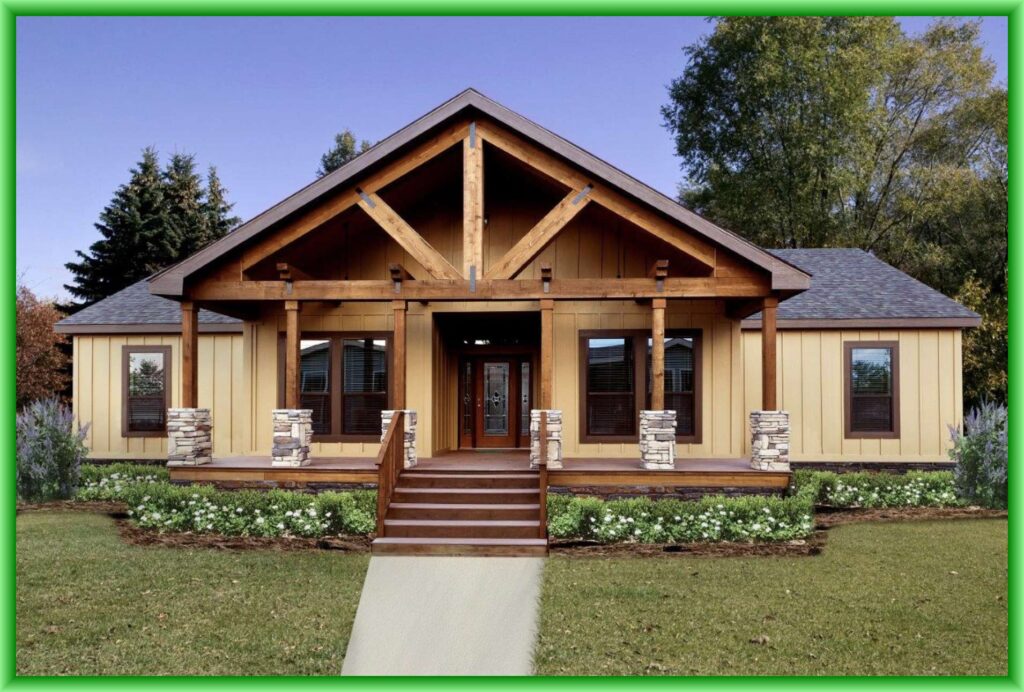Cal Green for Factory-Built Homes

Cal Green for factory-built homes can be a grey area for many building departments.
In order to understand the issue lets first define “factory-built”. The best source for the legal definition in California comes from the California Department of Housing and Community Development (HCD). HCD regulates the manufacturing of factory-built homes for sale in California. The regulations not only apply to California-built homes, but also to homes built outside the state and sold in California.
HCD defines “factory-built housing” as:
“A residential building, dwelling unit, individual room, or combination of rooms. or building components, assembly, or system so that all concealed parts or processes of manufacturing cannot be inspected before installation.”
I’m pretty sure some lawyer had many sleepless nights trying to come up with that all-encompassing sentence. Nonetheless, it is clearly inclusive of the various forms of manufactured buildings.
The definition includes factory-built ADU’s (accessory dwelling units), tiny homes, manufactured homes (formerly mobile homes), modular homes and pre-fabricated homes. In order to understand how Cal Green for factory-built homes applies to these buildings, we need to discuss them individually.
Cal Green for ADU’s and JADU’s

An Site-Built ADU by Alameda Tiny Homes
Cal Green for ADU’s varies with the type of ADU. Again, it’s important to define the term “ADU” in terms of California code. HCD notes that ADU’s have been known by many names over the years including granny flats, in-law units, backyard cottages, secondary dwelling units and more.
A “JADU” is a Junior Accessory Dwelling Unit. JADUs are allowed to be created within the walls of a proposed or existing single-family residence and can be no larger than 500 square feet. JADUs offer an additional housing option within the residence. They may contain a basic kitchen utilizing small plug-in appliances and may share a bathroom and other services like heating and air conditioning.
In general ADU’s and JADU’s must comply with the California Green Building Standards Code (aka Cal Green). The level and cost of compliance can vary based on a number of factors. In most cases you will need to submit a Cal Green Checklist as part of your initial permit submittal. Your building department will guide you on which Cal Green checklist to use. Some publish their own checklist, while others require you to submit the one published by HCD.
The most important factor is your local building department. Jurisdictions through-out the state have widely varying compliance requirements for Cal Green.
Some enforce the letter of the code, while others seem to cherry pick key code items and ignore the rest.
Some jurisdictions publish their ADU requirements online, although this is not the case for many building departments. They struggle with budget issues and updating compliance data online seems to be at the bottom of the priority list. In many cases you will need to call the plans desk/permit center to get specific guidance on Cal Green for your ADU.
The second factor that will affect how much Cal Green is going to cost you is whether the ADU is primarily factory-built or site-built. If your ADU is stick built from the the ground up, then a large portion of the Cal Green Code requirements apply. The ones that may be avoided include site issues (since presumably the site is existing). If your ADU will be stick-built we have written an article that addresses the requirements here.
If your ADU is factory-built, the Cal Green requirements are simpler and less costly. You will not need to comply with the Cal Green site issues. If the interior finishes are done in the factory, you will not need to document VOC requirements and lumber moisture content. Plumbing fixture requirements and bathroom exhaust fans will only need to meet the HCD requirements, since they will be installed at the factory.
It is important to understand that every item you “check” on the checklist will cost you money. The checklist’s rarely explain, in detail, the code requirements. For this reason we always recommend you hire a Cal Green specialist to author your checklist. With fees in the $300 range, a Cal Green specialist can save you many times this amount.
Lastly, if your building department requires a final Cal Green inspection you will need to get this done by a Cal Green Special Inspector.
Cal Green for Tiny Homes

A Tiny Home by Alameda Tiny Homes
CalGreen for Tiny Homes depends on the project. A tiny home can be site-built or factory-built. It may be the sole residence on a new lot, or it may be an ADU on a lot with an existing home.
With the cost of new construction spiraling upwards a tiny home can be the right choice for many people. Some buyers are looking for a simpler life with less upkeep and off-the-grid living. Whether a sole residence, or ADU, tiny homes are becoming the right choice for many Californians.
If your tiny home is the sole residence, and site-built on a new lot, it will need to comply with most of the Cal Green requirements. If your tiny home is factory-built, and an ADU on an existing lot, then the ADU requirements noted above would apply.
Cal Green for Manufactured Homes

A manufactured home is prefabricated and assembled at a factory. It is typically shipped, mostly complete, to the project site. Originally, factory-built mobile homes were constructed on a chassis with wheels, hence the “mobile” portion of their name. The terms “mobile home” and “manufactured home” are often used to describe the same type of home. Mobile homes and manufactured homes were finally distinguished from each other in 1974 when the National Mobile Home Construction and Safety Act was passed. The new law set stringent standards for manufactured home construction that sets them far apart from the largely unregulated “mobile homes” of the past.
The pre-1974 mobile homes were mounted on a wheeled chassis. The modern manufactured home is shipped to a site on a trailer and mounted on a foundation.
For the purposes of this article we will also include “modular homes” and “prefabricated homes” in this group. The only real difference is that modular homes may be shipped to the site in two or more sections where they are joined together. All of these examples are “prefabricated homes”.
Cal Green for manufactured, or modular homes, must comply with the Cal Green site requirements. Site issues include a plan to manage storm water during construction, ensuring grading slopes rainwater away from the building and possibly meeting the landscape irrigation requirements (depending on total landscape area).
Since the interior is typically finished you will not need to document VOC requirements and the lumber moisture content. Also, plumbing fixture requirements and bathroom exhaust fans will only need to meet the HCD requirements since they will be installed at the factory.
Cal Green – Words Have Meaning
The different names, and applications, of manufactured homes can be confusing. In most cases, however, the process is simpler than for a site built home. Your Cal Green compliance costs can be lower as well. As you can infer from the above, understanding the exact type and application of your factory-built home is necessary to understand your Cal Green code requirements. It can benefit your project to have a Cal Green specialist on your team. They will review your building department’s requirements and ensure you are not adding costs when they don’t apply to your project.
At CalGreen Energy Services we are specialists in the CalGreen Code. CalGreen is our only business. If you have a CalGreen question please feel free to give us a call. We are happy to share our knowledge.
Call us today and let us show you how we can help with your project.
Email: gary@calgreenenergyservices.com
Phone: 707-328-5299

For more information on Alameda Tiny Homes check out their website here: https://alamedatinyhomes.com/

Gary Welch has over 35 years experience in the field of sustainable building design. He is the CEO of CalGreen Energy Services. Gary is an ICC Certified CalGreen Special Inspector and Plans Examiner.

